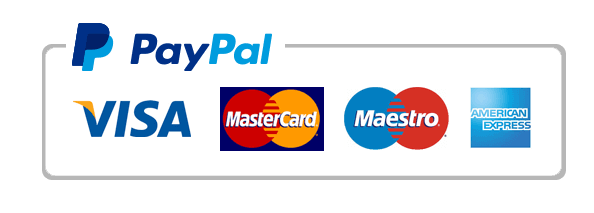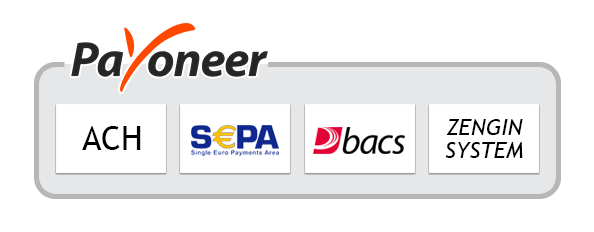Table of Contents
Overview
New York, NY – March 06, 2025 – The Solar Tile Market is really starting to shine. By 2034, it’s expected to grow to a whopping USD 849.1 million, up from USD 465.3 million in 2024. This market is buzzing because solar tiles not only protect your roof but also turn sunlight into electricity, making them super appealing for eco-friendly energy solutions. With a growth rate of 6.2% from 2025 to 2034.
The buzz is all about how these tiles blend beautifully with traditional roofing, offering a sleek, tech-savvy alternative to big solar panels. Homeowners and businesses are catching on, seeing solar tiles as a smart investment that cuts energy bills and reduces carbon footprints.
This growing popularity is sparking new opportunities in the market, driving companies to expand and innovate. More and more, as people look to sustainable living, solar tiles are becoming the go-to choice, paving the way for a bright and expansive market horizon.

Key Takeaways
- The global solar tile market is projected to grow from USD 465.3 million in 2024 to USD 849.1 million by 2034.
- The market is expected to expand at a CAGR of 6.2% from 2025 to 2034.
- Standard Solar Tiles held a dominant 67.2% market share in 2024.
- New Roofing dominated the market with a 59.1% share in 2024.
- Residential Buildings held a 59.1% share in 2024, making it the largest segment.
- The Asia-Pacific (APAC) region dominated the market with a 36.5% share in 2024, valued at approximately USD 170.2 million.
➤ For a deeper understanding, click on the sample report link: https://market.us/report/solar-tile-market/request-sample/
Report Scope
| Market Value (2024) | USD 465.3 Million |
| Forecast Revenue (2034) | USD 849.1 Million |
| CAGR (2025-2034) | 6.2% |
| Segments Covered | By Type (Standard Solar Tile, Dimpled Solar Tile, Eave-Mount Solar Tile), By Roofing Type (New Roofing, Reroofing), By Application (Residential Building, Commercial Building, Industrial Building) |
| Competitive Landscape | Autarq, CertainTeed, Dyaqua, Ennogie, GAF Energy, GB-Sol, Luma Solar, Meyer Burger, Midsummer, Shinto, Solarmass Energy, SolteQ, SunStyle, SunTegra, Tesla |
➤ Directly purchase a copy of the report – https://market.us/purchase-report/?report_id=141877
Key Market Segments
By Type
- In 2024, Standard Solar Tiles secured a commanding 67.2% share of the solar tile market, reinforcing its leading position. This segment thrives due to its ability to integrate smoothly with existing roofing materials, making it a top pick for residential and commercial properties seeking visually appealing solar solutions. The straightforward installation process and their ability to blend seamlessly with conventional roofing tiles have boosted their appeal among users who value sleek, efficient designs.
By Roofing Type
- In 2024, New Roofing claimed a dominant 59.1% share of the solar tile market, catering primarily to newly constructed buildings that embed solar technology from the design stage. The surge in demand for new roofing solar tiles is tied to the rise of eco-friendly construction projects focused on maximizing energy efficiency from the ground up.
By Application
- In 2024, Residential Buildings led the solar tile market with a 59.1% share, driven by the growing embrace of solar energy in homes. Escalating electricity costs, heightened awareness of sustainable living, and government-backed incentives have spurred this trend. Homeowners are gravitating toward solar tiles as a stylish, efficient alternative to traditional solar panels, boosting demand in urban and suburban neighborhoods.
Regional Analysis
The Asia-Pacific (APAC) region commands a significant 36.5% share of the solar tile market, valued at around USD 170.2 million. This dominance stems from rapid urban growth, generous government subsidies for solar energy initiatives, and the presence of leading solar tile manufacturers who leverage lower production costs in the region.
In the solar tile sector, North America has solidified its position as a key contender, propelled by substantial investments in renewable energy and favorable government policies. The United States spearheads this growth within the region, driven by state-level incentives like tax credits and rebates, coupled with rising consumer demand for eco-friendly building materials.
North America’s solar tile market stands out for its focus on innovation and cutting-edge technology, with companies consistently rolling out more efficient and visually appealing solar tile options. These advancements have been crucial in addressing early market hesitancy, particularly regarding the higher upfront costs of solar tiles compared to conventional solar panel setups.
Top Use Cases
- Residential Integration: Homeowners can replace traditional roofing materials with solar tiles, maintaining the aesthetic appeal of their homes while generating electricity. This approach offers a seamless blend of functionality and design, providing renewable energy without compromising on appearance.
- Commercial Buildings: Businesses can utilize solar tiles to meet sustainability goals and reduce operational costs. By integrating these tiles into their buildings, companies can harness solar power efficiently, contributing to a greener corporate image and potential energy savings.
- Historic Preservation: In areas with architectural or historical significance, solar tiles offer a way to incorporate renewable energy without altering the building’s original appearance. This solution ensures that structures maintain their historical value while benefiting from modern energy technology.
- Remote Locations: For off-grid or remote areas, solar tiles provide a reliable energy source. They eliminate the need for extensive infrastructure, offering a practical solution for powering homes and facilities in isolated regions.
- New Construction Projects: Incorporating solar tiles during the design phase of new buildings allows for optimized energy generation. This proactive approach ensures that structures are equipped with sustainable energy solutions from the outset, enhancing overall efficiency.
Recent Developments
1. Autarq
- Innovation: Autarq has been focusing on integrating solar tiles into residential and commercial buildings. Their solar tiles are designed to blend seamlessly with traditional roofing materials, making them aesthetically appealing.
- Partnerships: Autarq has collaborated with construction companies and architects to promote solar tiles in sustainable building projects across Europe.
- Contribution to Solar Tile Sector: Autarq’s solar tiles are known for their durability and efficiency, contributing to the adoption of solar energy in urban areas where aesthetics are a priority.
2. CertainTeed
- Innovation: CertainTeed, a subsidiary of Saint-Gobain, has developed the Apollo II solar roof system, which combines high-efficiency solar cells with durable roofing materials. This system is designed for both residential and commercial applications.
- Partnerships: CertainTeed has partnered with utilities and government programs to promote solar roofing solutions in the U.S.
- Contribution to Solar Tile Sector: The Apollo II system has been widely adopted in North America, contributing to the growth of solar-integrated roofing solutions.
3. Dyaqua
- Innovation: Dyaqua is known for its Invisible Solar technology, which allows solar tiles to mimic traditional roofing materials like terracotta or slate. This innovation has been particularly popular in historic preservation projects.
- Partnerships: Dyaqua has partnered with Italian municipalities and heritage organizations to install solar tiles in historic buildings without compromising their aesthetic value.
- Contribution to Solar Tile Sector: Their technology has expanded the use of solar tiles in heritage sites, where traditional solar panels are not permitted.
4. Ennogie
- Innovation: Ennogie, a Danish company, has developed solar roof tiles that are lightweight and easy to install. Their tiles are designed for both new constructions and retrofitting existing roofs.
- Investments: Ennogie has received funding from Danish green energy initiatives to scale up production and expand into international markets.
- Contribution to Solar Tile Sector: Their focus on lightweight and cost-effective solar tiles has made solar energy more accessible for residential users.
5. GAF Energy
- Innovation: GAF Energy, a subsidiary of Standard Industries, has launched the Timberline Solar Energy Shingle, a nailable solar shingle that integrates seamlessly with traditional roofing materials.
- Partnerships: GAF Energy has partnered with roofing contractors and homebuilders across the U.S. to promote solar shingles as a standard roofing option.
- Acquisitions: GAF Energy has expanded its manufacturing capabilities to meet the growing demand for solar shingles.
Conclusion
The Solar Tile Market is experiencing significant growth, driven by increasing demand for renewable energy solutions and heightened awareness of environmental sustainability. This expansion is attributed to technological advancements that have enhanced the efficiency and aesthetics of solar tiles, making them an attractive alternative to traditional solar panels. Government incentives and policies promoting clean energy adoption have further bolstered market growth. Despite challenges such as high initial installation costs and limited consumer awareness, the market outlook remains positive.
Discuss Your Needs With Our Analyst
Please share your requirements with more details so our analyst can check if they can solve your problem(s)





